Content Refresh: Strategies for Keeping Content Relevant and Engaging

Content is king, but even the best content needs regular updating and refreshing to remain relevant and engaging. In this article, we’ll discuss how to refresh your content strategy and keep your audience coming back for more.
With the half-life of content becoming shorter and shorter, it’s vital to understand why content refresh is necessary, how to effectively refresh your existing content, and how to measure the success of your efforts. So, let’s dive in and discover how to make your content stand out!
Understanding the Need for Content Refresh
As a content marketer, it is essential to understand the significance of content refresh and how it can affect your brand’s online presence. The half-life of content is an essential factor that contributes to the need for content refresh. Over time, any piece of content can lose its relevance and become outdated. Moz found that the average lifespan of a tweet is only 18 minutes. Similarly, blog posts, videos, and other forms of content have limited shelf lives.
The reasons for outdated content can be attributed to several factors such as changes in marketing strategies, shifts in audience demographics, and evolution in online trends. As audiences change with time, their preferences and interests will also change. What worked yesterday may not work today, so it’s important to keep up with these changes and adapt your content strategy accordingly.
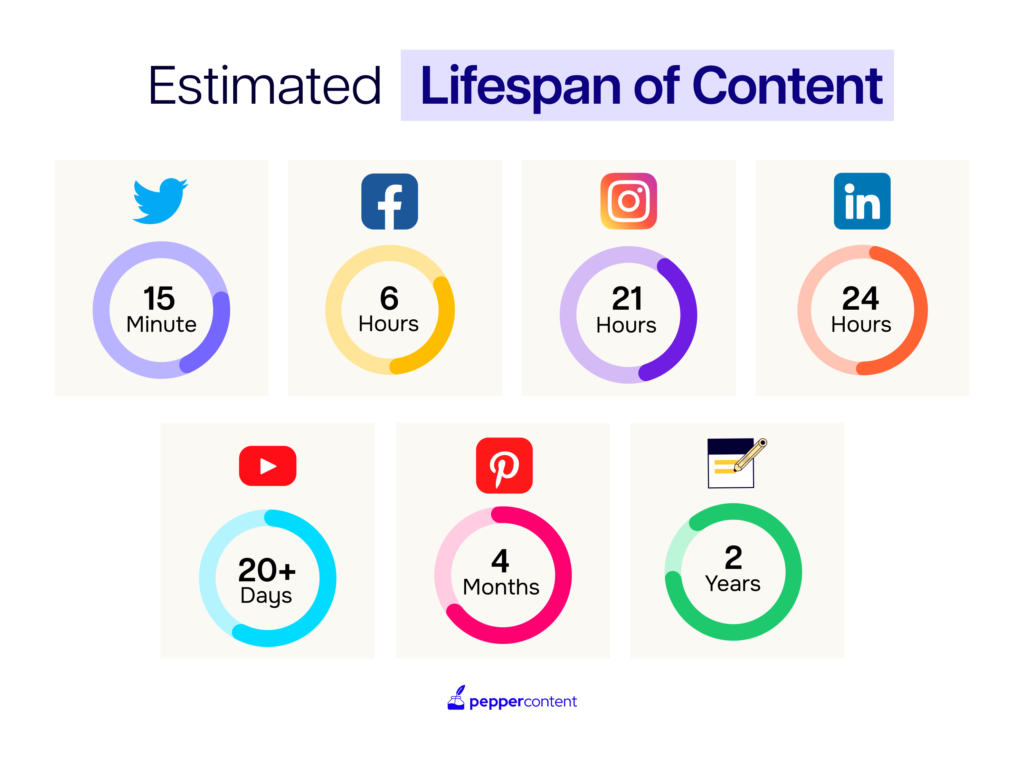
Another reason why content becomes outdated is that marketing strategies change with time. Therefore, it’s vital to monitor your industry trends and adjust your strategy accordingly. For instance, if you were using social media platforms like Facebook for marketing a few years ago, you would know that Facebook has changed its algorithm many times since then. As a result, you might need to revise your approach and look for new tactics.
Lastly, online trends evolve quickly; hence it’s crucial to stay on top of them. People are always looking for fresh and engaging content. So if you maintain a consistent approach without refreshing your content strategy regularly, you risk losing your audience’s interest.
In conclusion, understanding the need for content refresh is crucial for any marketer who wants to keep their brand’s online presence strong and engaging. By keeping an eye on various factors that contribute to outdated content, you can ensure that your brand stays relevant in today’s fast-changing digital landscape.
Strategies for Effective Content Refresh
To keep your website or marketing content relevant and up-to-date, it’s essential to refresh your content regularly. Here are some strategies you can use to refresh your content effectively:
1. Evaluate your existing content
Before you start refreshing your content, evaluate what you already have by using tools like Pepper’s auditing tool. This tool can help you audit your content in real-time and check for plagiarism, readability score, word count, and more apart from understanding
which content is high-performing, low-performing, and outdated.
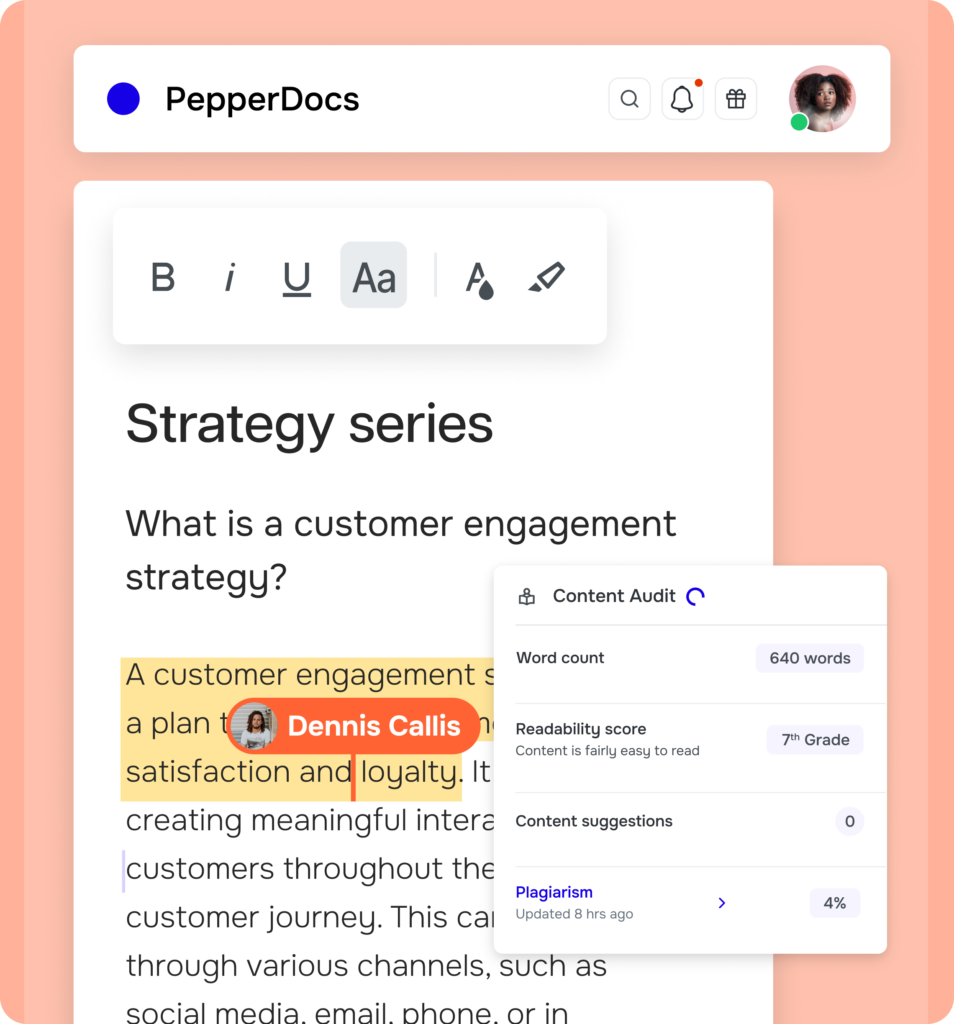
Once you’ve identified outdated content, decide whether you need to update it or remove it entirely from your website. Removing irrelevant content will not only reduce clutter on your website but also help improve the overall user experience.
2. Repurpose Old Content into New Formats
Repurposing old content into new formats is a great way to reach new audiences. You can turn old blog posts into infographics, podcasts, videos, social media posts, and more.
For instance, if you have a blog post about “10 tips for improving your web design,” you could repurpose this content by creating an infographic that highlights the most important points. Infographics are highly shareable and can be used on various platforms such as Pinterest, Twitter, LinkedIn, and Facebook to increase engagement.
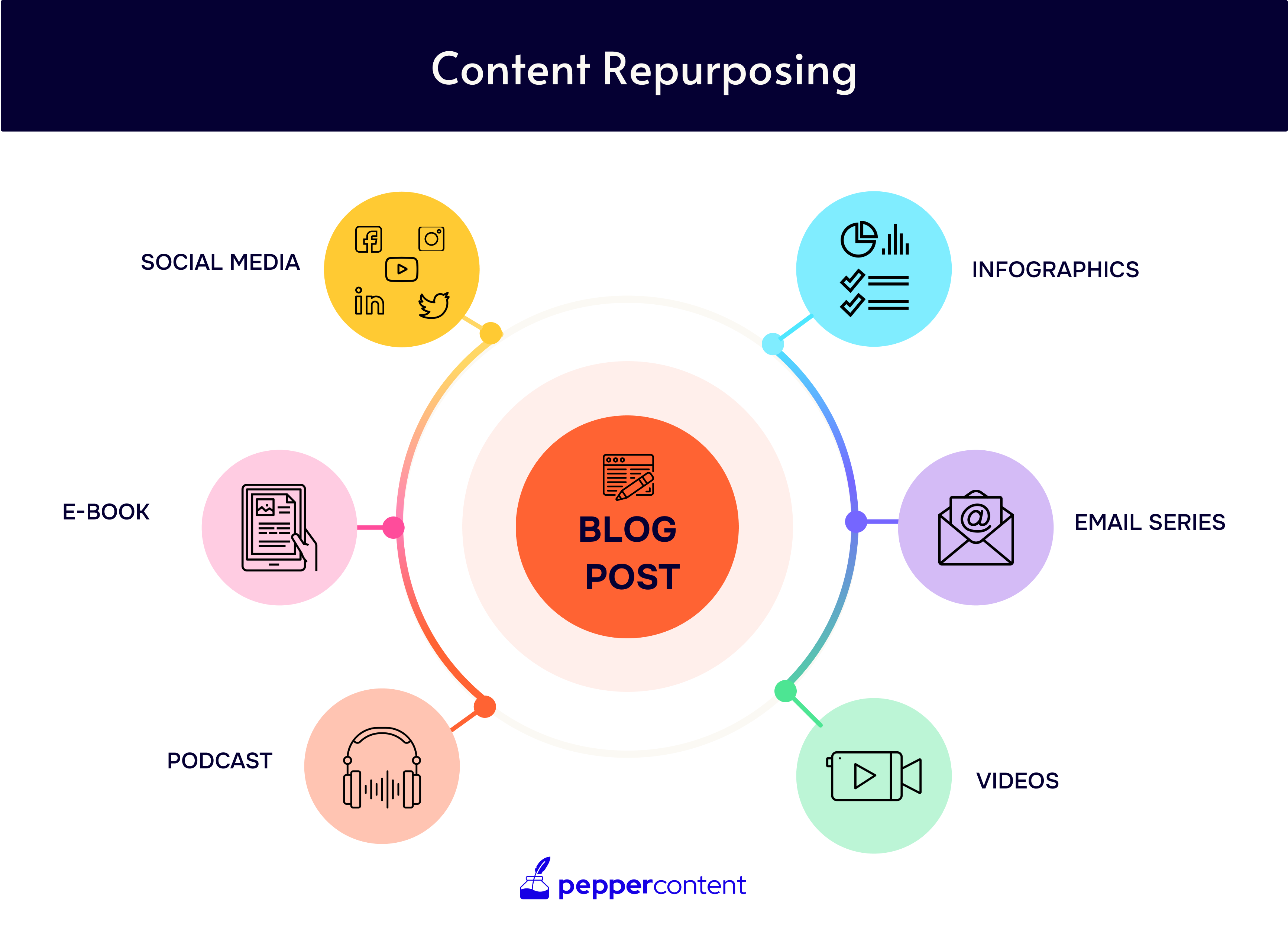
3. Update Existing Content with Fresh Information and Visuals
One of the easiest ways to refresh old content is by adding fresh information or visuals to make it more up-to-date. For example, if you wrote a blog post about the latest social media trends in 2019, you could update the post with newer data on social media trends in 2021.
Similarly, if your blog post has no images or outdated visuals that don’t align with your brand, you could add high-quality images that reflect your brand’s personality and tone. You could also add infographics, videos, GIFs, and other visual content to make the post more engaging.
4. Optimizing Your Content for SEO
Optimizing your refreshed content for search engines is crucial to its success. Conducting keyword research is an essential part of this process as it helps you understand which keywords your target audience uses and what topics they’re interested in.
Using tools like Google’s Keyword Planner or Pepper’s keyword position tracking can help you identify high-volume, low-competition keywords relevant to your business. Once you’ve identified these keywords, incorporate them into your headlines, meta descriptions, anchor text, and body copy to improve your search engine rankings.
5. Measuring the Success of Your Refreshed Content
Measuring the success of your refreshed content is essential to understanding which strategies work best for your business. You can track website traffic, engagement metrics such as likes/shares/comments, and bounce rates using tools like Google Analytics.
Social media insights are also a great way to monitor engagement metrics such as likes, shares, and comments on social media platforms. By analyzing these metrics, you can identify which content types and formats resonate with your audience and adjust your strategy accordingly.
In conclusion, refreshing your content is crucial to keeping up with changing trends and user expectations. By evaluating old content, repurposing it into new formats, updating it with fresh visuals or information, and optimizing it for SEO you can attract new visitors while keeping current ones engaged. Don’t forget to measure the success of your refreshed content by tracking engagement metrics regularly!
Conducting Keyword Research for Content Refresh SEO
Refreshing your content doesn’t just involve updating and repurposing old posts. It also requires optimizing your content with relevant keywords to improve search engine rankings. Keyword research is the first step in this process.
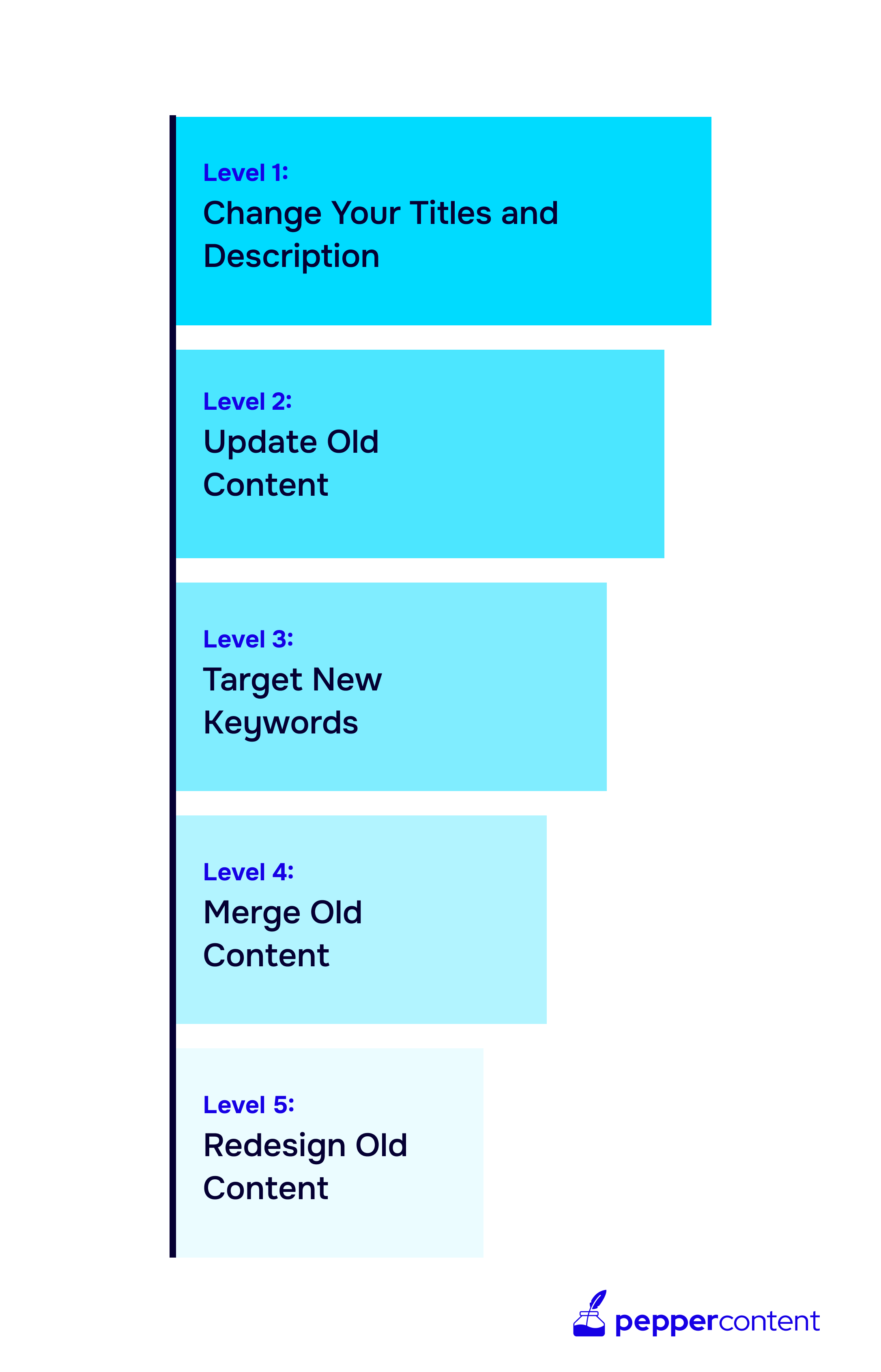
Importance of keyword research to improve SEO rankings
Keyword research helps you identify the most relevant and popular keywords related to your industry and audience’s interests. This, in turn, helps you optimize your content to rank higher in search engine results pages (SERPs).
How to conduct keyword research effectively
There are several tools you can use to conduct keyword research effectively, such as Google’s Keyword Planner. Such tools help you find relevant keywords, and analyze their search volume, competition level, and other metrics.
Optimizing content with targeted keywords
Once you have identified the most relevant and popular keywords, it’s time to optimize your content with them. Incorporating targeted keywords in headlines, meta descriptions, anchor text, and body copy can help search engines understand what your content is about and rank it accordingly.
Measuring the Success of Your Refreshed Content
Measuring the success of your refreshed content is just as important as creating it in the first place. Tracking your results will enable you to analyze what worked and what didn’t, and help you improve your strategy for future campaigns.
One crucial metric to monitor is traffic. Use Google Analytics to track your website’s traffic and determine which pages or posts are receiving the most views. Additionally, engagement metrics such as likes, shares, and comments can provide valuable insights into how well your content is resonating with your audience. By monitoring bounce rates, you can also gain an understanding of how long readers are staying on your page.
Social media insights can also be useful for measuring engagement metrics on platforms such as Facebook, Twitter, and Instagram. These insights allow you to monitor engagement rates, impressions, and reach. By analyzing these metrics, you can adjust your social media strategy accordingly.
Overall, tracking the success of your refreshed content is essential for optimizing future campaigns. By using tools to measure traffic and engagement metrics, you can make informed decisions about how to create even more engaging content for your audience.
Keeping your content fresh and engaging is the key to success in content marketing. Refreshing your content regularly can help you stay ahead of the competition and keep your audience interested and coming back for more. By evaluating your existing content, repurposing old content into new formats, updating existing content with fresh information and visuals, conducting keyword research for content refresh SEO, and measuring the success of your refreshed content, you can ensure that your content remains relevant and engaging. Remember to track your results, use tools for measurement, and continually improve your strategy. Keep your content alive with a robust refresh strategy that keeps it relevant!
FAQS
1. What is the ideal frequency for content refresh?
The frequency of content refresh depends on your industry, audience, and goals. Neil Patel recommends refreshing your content at least once a year.
2. What are the benefits of content refresh?
Content refresh helps to improve SEO rankings, attract new audiences, increase engagement, and establish credibility as an industry leader.
3. How do I decide which content to refresh?
Evaluate your existing content using tools such as HubSpot’s auditing tool or Google Analytics. Identify high-performing and outdated blog posts that can be repurposed or updated with fresh information.
4. Can I lose traffic while refreshing my content?
It’s possible to experience a temporary decrease in traffic during the content refresh process. However, updating and optimizing refreshed content can lead to long-term gains in traffic and engagement.
5. Do I need to hire a professional to handle my content refresh?
While working with a professional can be helpful, it’s not necessary. With the right tools and resources, you can effectively refresh your content on your own.
Latest Blogs
Explore how Google’s 2025 AI search updates triggered ranking chaos. Learn actionable strategies to adapt your SEO for AI Overviews, zero-click searches, and SERP volatility. Stay ahead now.
Learn how to rank on AI search engines like ChatGPT, Perplexity, and Gemini by optimizing your content for authority, structure, and relevance. Stay ahead in AI-driven search with this strategic guide.
Explore the best healthcare SEO services for your medical practice. Improve online visibility and effectively reach more patients in need of your services.
Get your hands on the latest news!
Similar Posts

Content Strategy
5 mins read
Choosing The Best Healthcare Marketing Agency For Effective Content Solutions
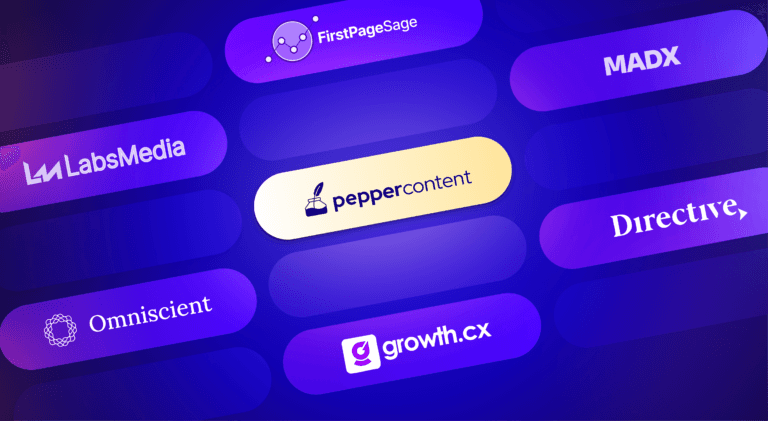
Content Marketing
4 mins read
Top 10 Agencies B2B SaaS Content Marketing for B2B Success

B2C Marketing
5 mins read